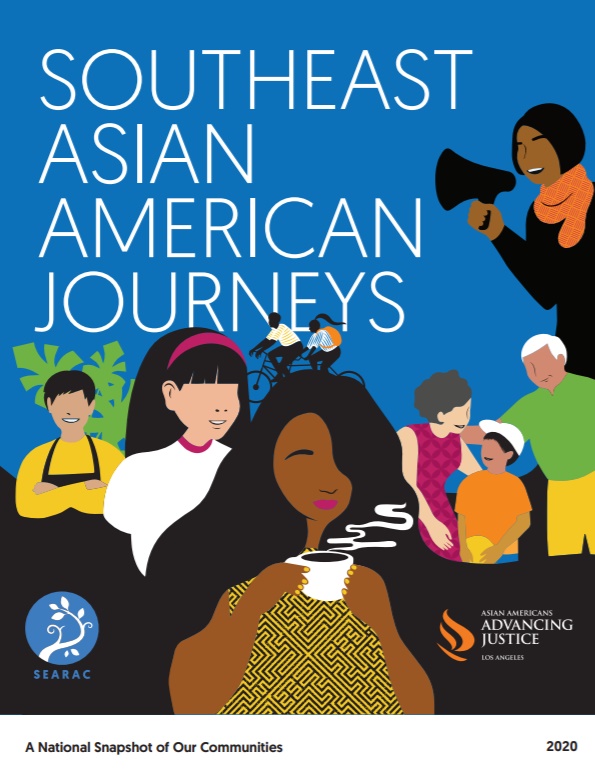The daughter of Cambodian refugees, Jennifer Tang grew up with her family of five in a small apartment in Chinatown, where gang violence was not uncommon, and poverty was evident.
“And yet, I always had a sense of hope because I could see what world was possible through my amazing public schools and libraries,” said Tang, a teacher and SEARAC Leadership and Advocacy Training alumnus who resides in Monterey Park, CA. “I knew that if I studied hard, I could become whatever I wanted to be. And if many of my peers studied hard, the circumstances of our community could improve.”
SEARAC, together with our friends at Asian Americans Advancing Justice – Los Angeles, had the privilege of sharing Jennifer’s story along with those of other community members across the United States in our newly launched report, Southeast Asian American Journeys: A National Snapshot of Our Communities. The report represents a culmination of over a year’s worth of extensive research, community interviews, and comprehensive data analysis.
 While disaggregated data on Southeast Asian American communities are limited, the available data are powerful; they reveal narratives that are frequently hidden under the myth of an Asian model minority. They tell the story that decades after initial resettlement in the United States, SEAAs still face systemic and intergenerational barriers as a result of their refugee legacy.
While disaggregated data on Southeast Asian American communities are limited, the available data are powerful; they reveal narratives that are frequently hidden under the myth of an Asian model minority. They tell the story that decades after initial resettlement in the United States, SEAAs still face systemic and intergenerational barriers as a result of their refugee legacy.
For example, report findings included the below:
- While the rate of uninsured SEAAs continues to be high, the Affordable Care Act significantly decreased the percentage of uninsured SEAAs. The greatest percentage decreases were seen in Cambodian Americans (20% to 15%) and Laotian Americans (18% to 14%).
- Hmong and Cambodian Americans are more likely to have public health insurance than the average population. Hmong Americans have public health insurance enrollment rates similar to African Americans (39% and 38%, respectively).
- Cambodian Americans, with 31% enrolled in public health insurance, have a rate similar to that of Latinos (33%).
In addition to health statistics, the report reveals data surrounding refugee resettlement and immigration, education, economic justice and housing, and civic engagement both nationally as well as in the states of California, Massachusetts, Minnesota, Texas, and Washington.
For SEAA older adults and their families, data are key to equity. Many in the SEAA community have limited English proficiency and are part of low-income households, and, as a result, many families struggle to access the care they need to treat urgent and chronic health conditions. Furthermore, SEAA communities still must manage the aftermath of the trauma of war, genocide, environmental exposures, and displacement, which have left many SEAAs, including elders, with physical and mental health conditions that have gone untreated. While this collective trauma and the stressors associated with relocation, language barriers, racism, discrimination, and cultural conflicts continue to affect the emotional health of many SEAA refugees and their children, the unavailability of disaggregated data has concealed these struggles.
The opinions expressed in this article are those of the author and do not necessarily reflect those of the Diverse Elders Coalition.
